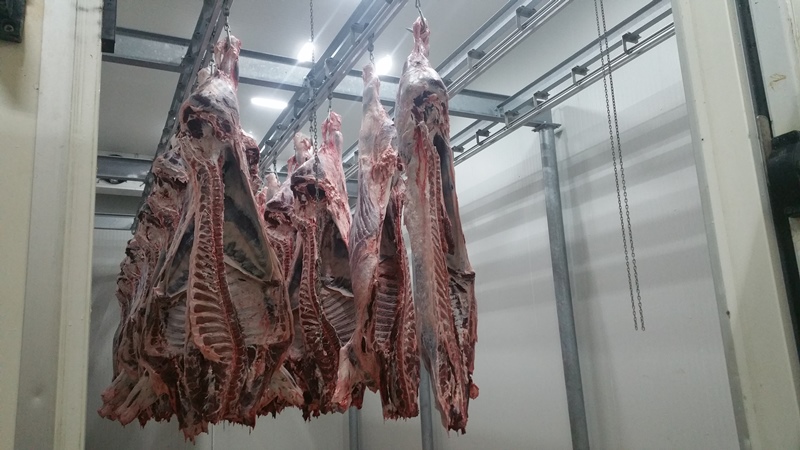
Meat is a very suitable food material for the growth of microorganisms due to its chemical composition, which is rich in proteins, lipids and water. Furthermore, since the meat contains lipid that makes the meat very sensitive to oxidation.
Also, the growth of microorganisms is a process dependent on temperature. To prevent this, it is important to reduce the temperature of the meat immediately after obtaining the carcasses. Therefore, cooling should be carried out inside the slaughterhouse. This process is known as primary chilling.
Meat loses weight through surface evaporation. This is dependent on the temperature and relative humidity in meat and ambient conditions.
After carcass dressing, meat is separated and classified as beef, bone and edible offal according to histological properties. The carcass itself contains mainly bone, fat and connective tissue. Each part should be subjected to cooling process against the risk of microbial growth, temperature effects and surface dehydration.
The Primary Chilling process is the process of reducing temperature of fresh products quickly through the cooling system. Fast cooling of the meat surface does not only slow or stop the development of surface microorganisms, but also reduces the weight and color loss of the surface. Although different primary chilling methods are used such as immersion in iced water especially for poultry; air chilling is the most common.
The cold rooms where cooling takes place must have low air temperature, high air speed, high-relative humidity and high cooling capacity.
Air temperature should be at 0°C, not lower than -1°C, which could freeze the surface of meat and spoil its appearance.
The air velocity may vary from 0.25 to 3.0 m/s. However, for economic reasons, the most common speeds in use are between 0.75 and 1.5 m/s in the empty section of the cold room.
The relative humidity during the cooling process must be kept very high level to prevent excessive weight-loss. The recommended rate is between 90 and 95% RH.
The primary chilling is completed when the warmest point of the carcass come to a temperature of about 7°C (3°C for the offal). With current technology, these temperatures can be reached in small carcasses in 16-24 hours and in large carcasses in less than 36 hours.
Primary Cooling can be performed in small cold rooms or in cooling tunnels. It is performed in two or three phase in cold rooms. In the first stage, the air temperature is maintained at about 0°C. During first stage, while the air movement is maintained at the maximum level, caution should be taken against the risk of superficial freezing. For large carcasses, after 10-12 hours, the temperature and humidity conditions are maintained while the air circulation inside the chamber is reduced. This second phase chilling last about 6 to 10 hours. After this phase, the meat is transferred to the cold storage in the third phase where the carcass temperature is stabilized.
The capacities of small cold rooms should be designed in such a way that they can be filled within two hours, assuming the slaughterhouse is operating normally. The number of rooms must be sufficient enough for the busiest working day.
Particular attention should be paid that to fresh carcasses should be placed behind the already chilled carcass or in the process of being cooled carcass. Hence, the cold air reaches them so that the risk of superficial condensation is prevented.
